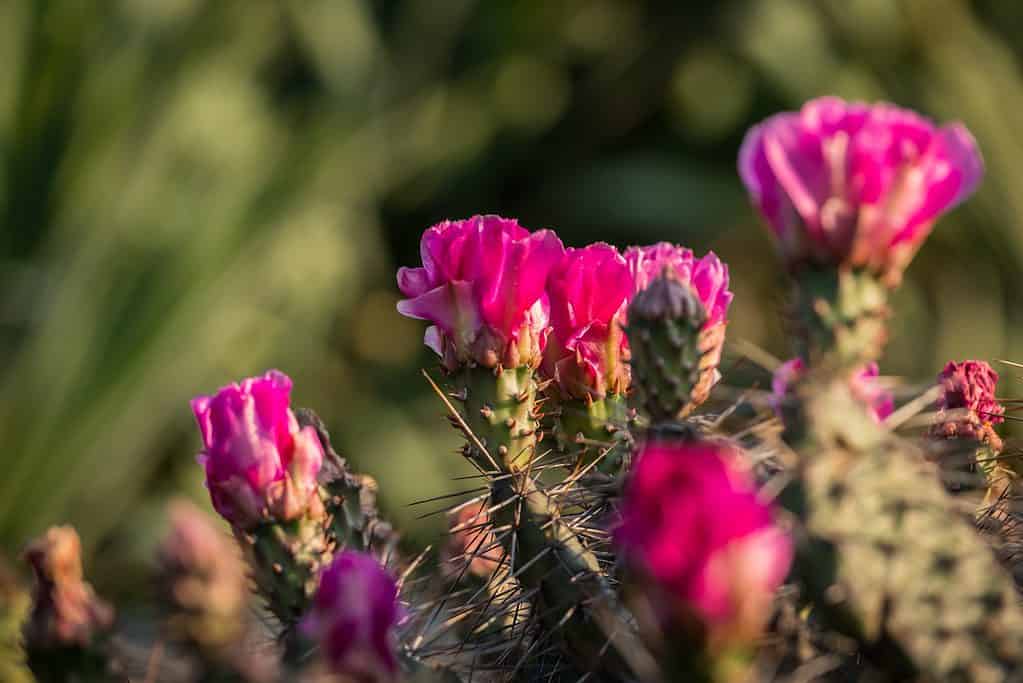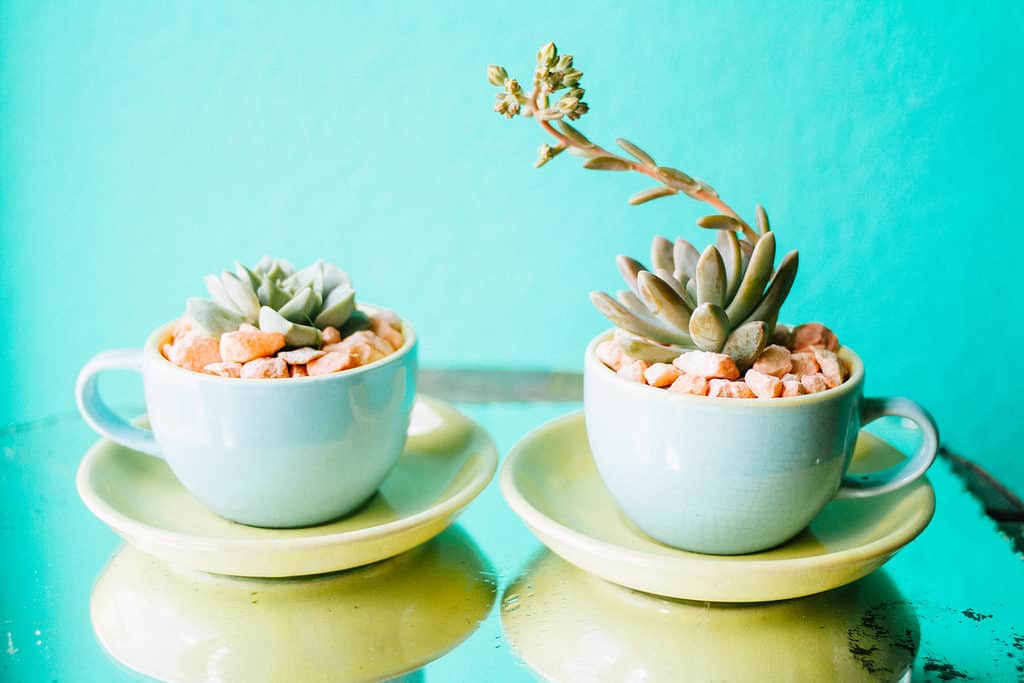Succulents are drought-resistant plants that generally thrive in dry environments. It’s this feature that makes them beginner-friendly, as watering too little is preferable to watering too much.
There’s no exact answer for how often to water succulents. The frequency with which succulents need water can vary depending on various factors.
Here are some key factors that influence how often to water your succulent and a foolproof trick for avoiding overwatering.
Succulent Species
Different succulent species have varying water requirements, with some species requiring more water and others needing less.
For example, cacti thrive in arid conditions and can go for long periods without water. Some species, such as the prickly pear cactus, can store water in their fleshy stems.
Aloe and sempervivum are incredibly drought-tolerant. Sempervivum, in particular, is great for rock gardens and can survive in poor soil and extreme temperatures. They are highly drought-tolerant and prefer to be kept very dry.
Conversely, aeoniums and echeveria are also drought-tolerant but prefer not to dry completely.
Taking the time to research the type of succulent you have and its individual watering needs will help you set the right hydration schedule.

Prickly pear cacti can go long periods without watering and still have vibrant blooms.
©vitaprague/Shutterstock.com
The Season
Like many plants, succulents experience an annual dormant period. This period typically falls during the winter months.
During this timeframe, succulents go into hibernation. Their nutrient processing slows down, resulting in diminished growth and nutrient absorption. Thus, your succulents require less water to survive. Many succulent owners shift from a 1-2 week watering schedule to a 2-3 week gap between waterings.
During the summer months, when your succulents are growing, and water evaporates quicker, you may need to increase the watering frequency, ensuring all of your succulents are watered once per week.
The Climate and Location
The local climate will also impact your succulents’ watering needs. If you live in a hot, dry region, your succulents may require more watering than those in a humid climate.
Indoor succulents in areas with cold winters may require more watering during their dormancy, related to the dry air from indoor heating. The location in your home also has an impact. If your succulent is in a bathroom or kitchen, it may get the moisture it needs in the steam from your shower or stove.
Another consideration is whether your succulents are planted indoors or outdoors. Outdoor succulents benefit from rainfall but may need assistance during heat waves or dry spells.
All of these seemingly subtle differences can impact your succulents’ unique needs. You may find that two succulents of the same species have different watering schedules based on their location in your home.

The climate and location of succulents determine their watering needs.
©puha dorin/Shutterstock.com
The Pot Size and Type
The pot size and type are often overlooked factors when planning a succulent watering schedule. The size in comparison to the succulent’s root and the material of which the pot is made will impact how your plant absorbs water.
Clay pots, for example, are porous and allow water to evaporate more quickly than plastic pots. Similarly, clay pots that haven’t been presoaked could rapidly absorb moisture during the first few waterings after transplanting or propagating. As a result, the soil drys out faster, so succulents planted in clay pots may need to be watered more frequently than those planted in plastic pots.
On the other hand, plastic pots do not allow water to evaporate as quickly. In extreme cases, this can lead to the soil staying too moist for too long, increasing the risk of root rot. Proper drainage holes are essential in plastic pots.
The color of the pot is another concern for potted succulents that move outdoors or near a sunny window during the summer. Pots with dark colors can also cause the soil to dry out faster as they absorb more heat from the sun. In contrast, lighter-colored pots reflect more light and heat, helping to keep the soil cooler and moister.
Understanding the impacts of the pot type and size will help you be more attuned to your succulents’ watering needs.

Understanding the impact of the container material, size, and color will guide how you water your succulent so it thrives.
©ReginaPivetta/Shutterstock.com
The Soil Type and Quality
Finally, the soil type and quality also impact your succulents’ watering needs.
Succulents require well-draining soil with coarse matter like perlite and sand for absorption. Using the wrong type of soil could hold the water for too long (increasing the risk of root rot) or not long enough for proper nutrient absorption. Always choose a succulent or cactus-friendly potting soil.
If your succulent hasn’t been repotted in fresh soil for a while, you may notice the water run through too quickly. This indicates that the soil quality is diminished, and your succulent may need more frequent watering. Ideally, you’ll repot your succulents with fresh soil at least every two years.
The Best Way to Water Succulents
With so many variables, how can you identify how often to water your succulent? The best method is to stick your finger in the soil down to the second knuckle. If it’s dry, it’s time to water your succulent. If it’s damp, try again in a few days.
Taking the time to research each species and note the influencing factors will also help you give your succulent sufficient care.
The photo featured at the top of this post is © iStock.com/Mod Quaint
Thank you for reading! Have some feedback for us? Contact the AZ Animals editorial team.






